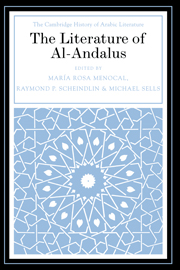Book contents
23 - The Mozarabs
from PART V - MARRIAGES AND EXILES
Published online by Cambridge University Press: 28 May 2012
Summary
In November 1982, during a brief stop in Toledo, Pope John Paul II was greeted by representatives of that city’s surviving Mozarabic community and presented with a tenth-century prayer book. It is not known whether John Paul, an amateur linguist of some note, opened this artifact of Christian fidelity, written in a characteristically Andalusi-Arabic hand, and read its first line: “bi-smi llāhi r-raḥmāni r-rahim“ [In the name of God, the Merciful, the Compassionate].
This manuscript was a fitting gift for the first visit by a reigning pontiff to Spain. Given by the descendants of a people with a complex, hybrid identity and received by the literal successor of the men who helped extinguish important features of that identity, it was freighted with meaning and irony. That it survived to the present day, when so many other Iberian Arabic texts were willfully destroyed, is remarkable. That 3,300 descendants of the Mozarabic culture that produced it still proudly call themselves Mozarabs is astonishing. One would have assumed that Mozarabs, as a group, had disappeared sometime before Cardinal Cisneros, seized by a revisionist’s mania for antiquities, attempted to revive their dead liturgy in the early sixteenth century. Yet there they were, in Toledo, in 1982, still in the same place they were last seen nearly six hundred years earlier, still wearing the tattered shreds of their historical identity. For the modern Mozarabs, with their culture long abandoned and their traditional languages gone – Arabic banished from Iberia five hundred years earlier, and the Mozarabic Romance dialect extinct – all that persists of that earlier identity is an ancient Latin liturgical rite – an un-Arabized religious remnant of a pre-Muslim Visigothic past, now sustained with regular but poorly attended masses in the Toledan cathedral’s Mozarabic chapel – and the belief that their foreparents once remained proudly Christian on an almost entirely Muslim peninsula.
- Type
- Chapter
- Information
- The Literature of Al-Andalus , pp. 415 - 434Publisher: Cambridge University PressPrint publication year: 2000



